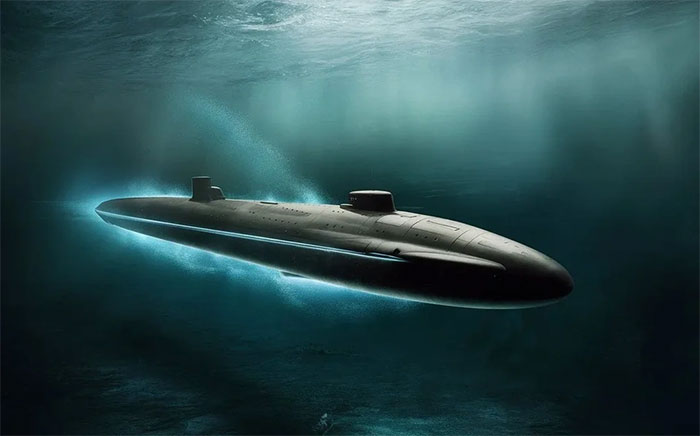China aims for laser submarines that move at the speed of sound
China seems to be charting new horizons by developing submarines powered by laser technology .
This progress, reported by the South China Morning Post , comes from research conducted by Harbin University of Technology.
The idea involves improving submarine propulsion, which appeared two decades ago in Japan, but it was not until today that it took shape. This technology uses a laser with a capacity of 2 megawatts , transmitted through microscopic optical fibers surrounding the submarine.

This technology promises to not only revolutionize naval propulsion, but also have civilian applications (Photo: Reddit).
This device will create plasma in the water, causing explosive waves and pushing the ship forward with an impressive force, estimated to be up to 70,000 newtons.
But that's not all: laser propulsion also creates a "super cavitation" phenomenon , evaporating water around the submarine to create air bubbles. This air coating significantly reduces friction, theoretically giving the submarine the ability to exceed the speed of sound.
Despite this remarkable progress, this technology is still not ready to equip nuclear submarines.
The researchers had to overcome several obstacles such as the fiber's ability to dissipate heat, their resistance in marine environments, as well as their integration with acoustic coatings.
The research team led by scientist Ge Yang, Harbin University of Technology, has made significant progress in improving the efficiency of converting laser beams into thrust.
They said they took inspiration from the aerospace industry to optimize the propulsion system, reduce energy loss and minimize friction.
Experts say the potential applications for this technology extend beyond submarines, opening up possibilities for underwater weapons, missiles and torpedoes by increasing their range in marine environments. - Through super foaming.
However, to make submarines running at supersonic speeds practical, there are still many challenges including heat control, the durability of optical fibers, as well as their integration into existing structures.
In addition , the impact of cavitation bubbles on submarines is still a question mark, they will likely affect the stealth feature of this vehicle.
This will be a technology that promises to not only revolutionize naval propulsion but also have civilian applications.
- China developed a 'magic eye' that clearly envisions every submarine in the sea
- How will things change when submarines become underwater carriers?
- China's ultrasound submarine runs to the US in 100 minutes
- Jump from a height of 39km with supersonic speed
- New Chinese laser guns can burn skin in 1 second at 800 meters
- Korea develops 'fast as lightning speed train'
- Sound map helps blind people to travel on their own
- Glasses against laser
- The first time the scene of the laser moving in the air was recorded
- China pilot mini-drones test
- Sound waves reveal the submarine suspected to be sunk by a sea monster
- The moment the plane passes
 The US company is about to build a supersonic passenger plane of 6,000km / h
The US company is about to build a supersonic passenger plane of 6,000km / h Japan develops avatar robot as in fiction film
Japan develops avatar robot as in fiction film Australia tested the world's first mango picking robot
Australia tested the world's first mango picking robot America develops technology to separate water from animal waste
America develops technology to separate water from animal waste